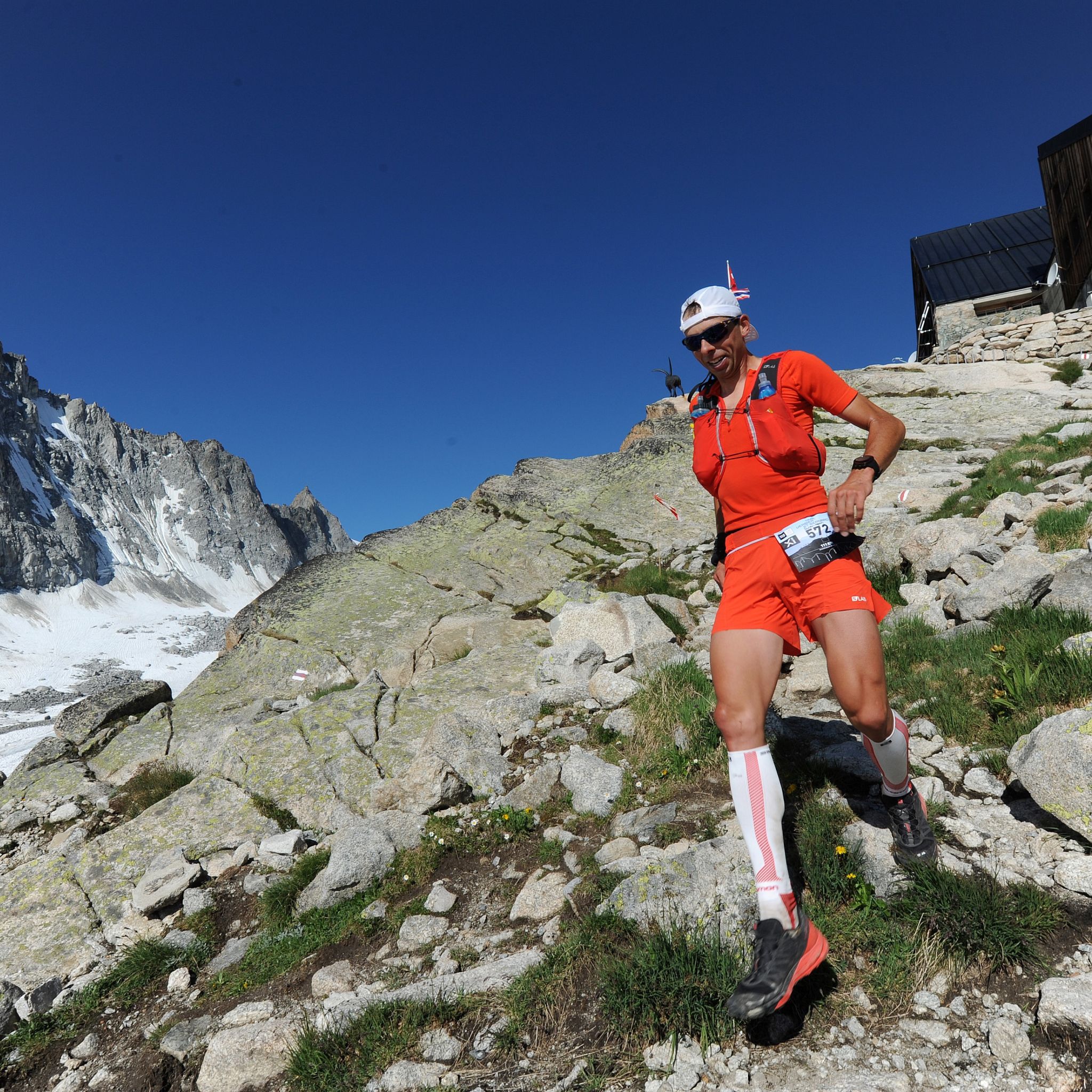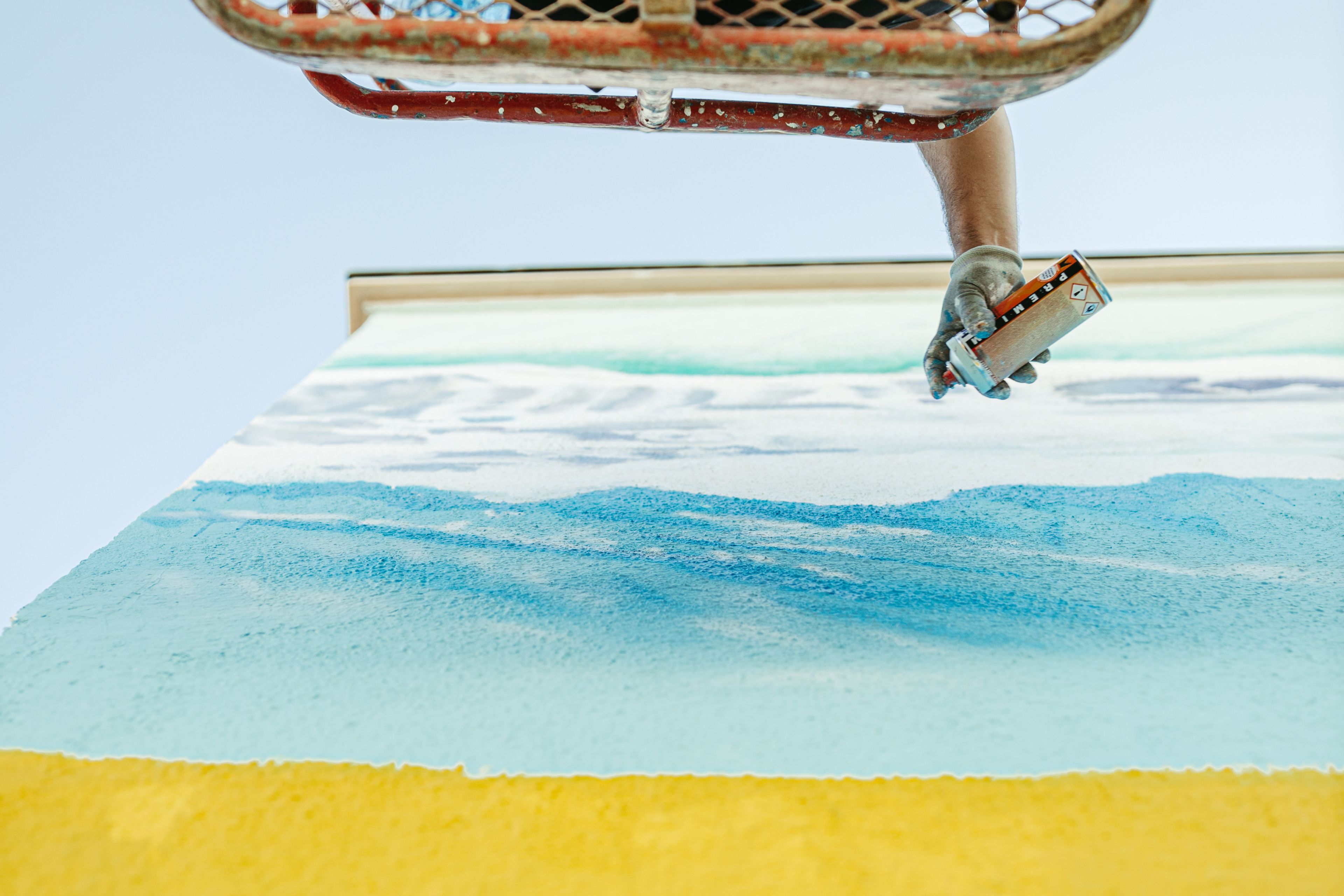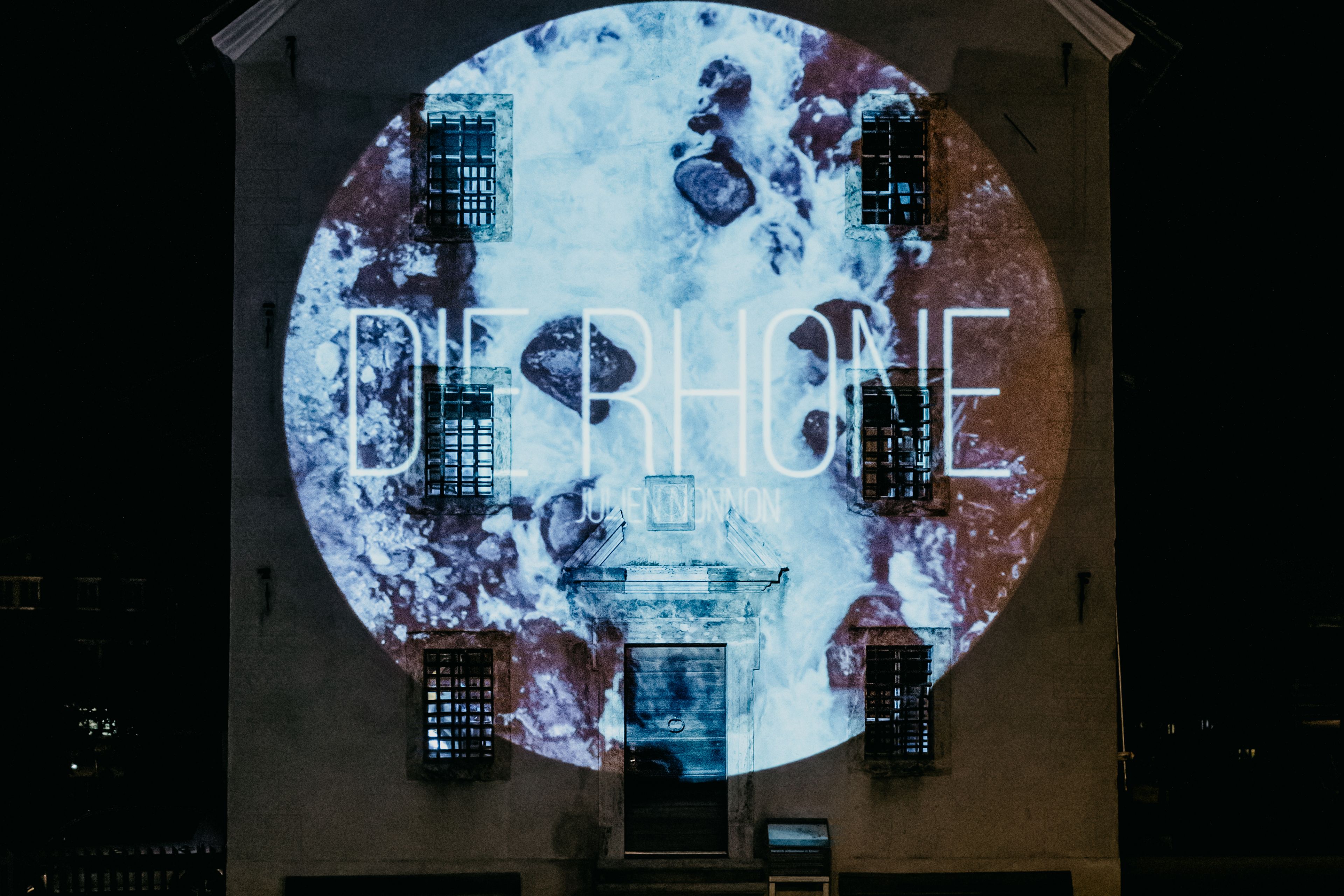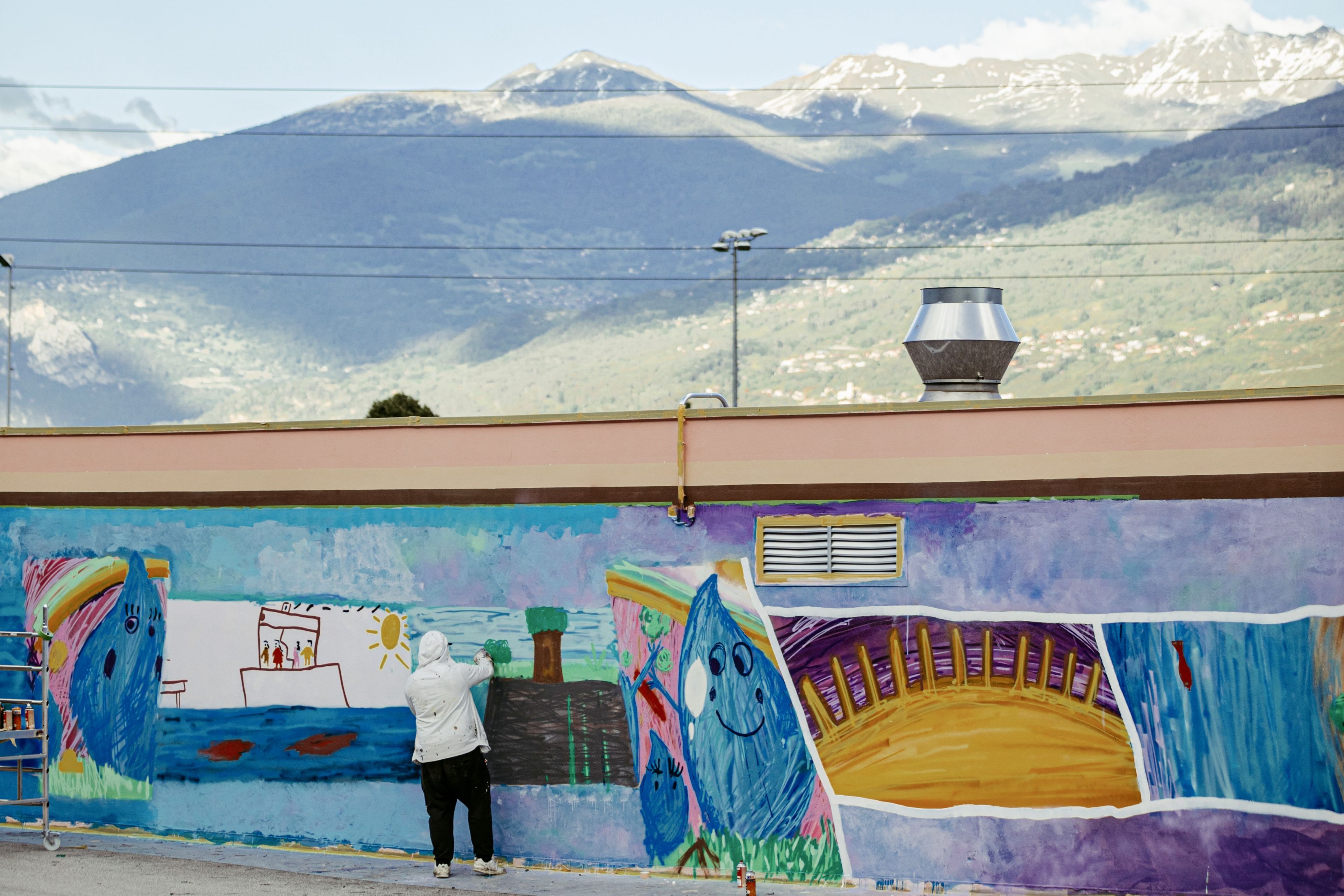STREET-ART
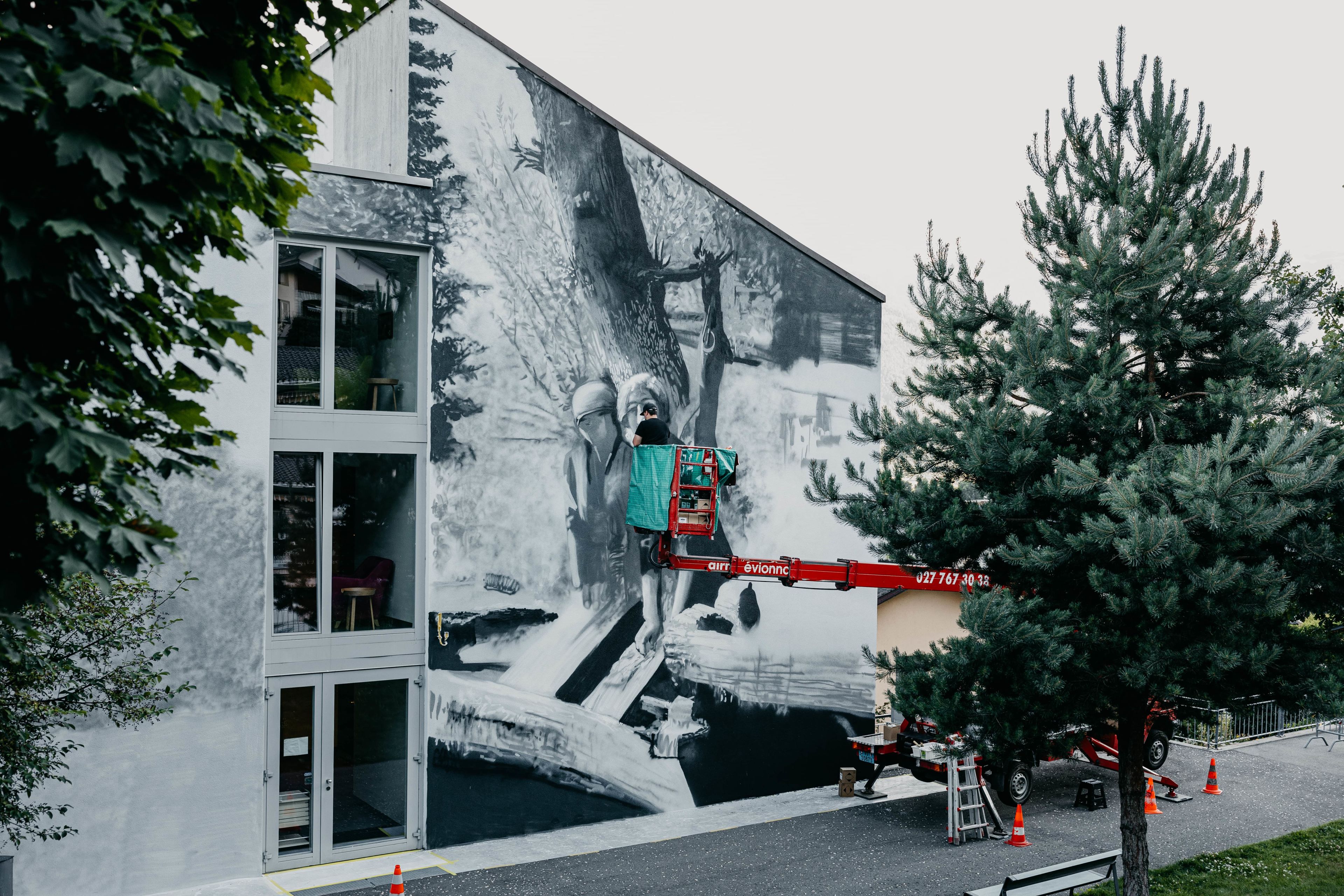
Valais is creating an open-air museum spanning the entire region: a collection of innovative wall paintings that give new life to local heritage.
Street art loves an audience. The giant paintings adorn walls that all can see, often in an explosion of colour: real eye-catchers. The latest work by Issam Rezgui, alias Jasm One, certainly grabs the attention of anyone passing the exit of Zermatt station: the painting celebrates the ascent of the Matterhorn 150 years ago by Lucy Walker, the first woman to climb the mountain. Issam Rezgui is a graffiti artist, founder of the Art Valais project and president of the eponymous association, and his anniversary work is this year’s first addition to the Art Valais collection, which will ultimately form a vast-open air museum extending across the whole canton.
Issam Rezgui’s scheme envisages the creation of open-air paintings in more than 50 municipalities of Valais, from the German-speaking Obergoms (upper Rhône valley) to French-speaking Saint-Gingolph. Last year, Swiss and international artists completed the first eight works of this ambitious cultural project; this year, between spring and autumn, 10 new paintings are taking shape, on the theme of water. From this summer, the new Street Art Valais app will enable visitors to follow this cultural route via smartphone, providing details of the artists, their works and their locations. In these times of Covid, the idea of creating an open-air museum of street art, accessible to all free of charge at any time, is more apt than ever. The Art Valais project will make a significant contribution to promoting culture in the region, and now forms part of the Agenda 2030 VS programme of sustainable development. “The idea of these street art paintings is to reflect the local DNA, traditions and environment,” Issam Rezgui explains. “Each work has to make sense in its setting. We shouldn’t be ashamed of our folklore; in fact we should always be reinterpreting our heritage in an innovative way.”
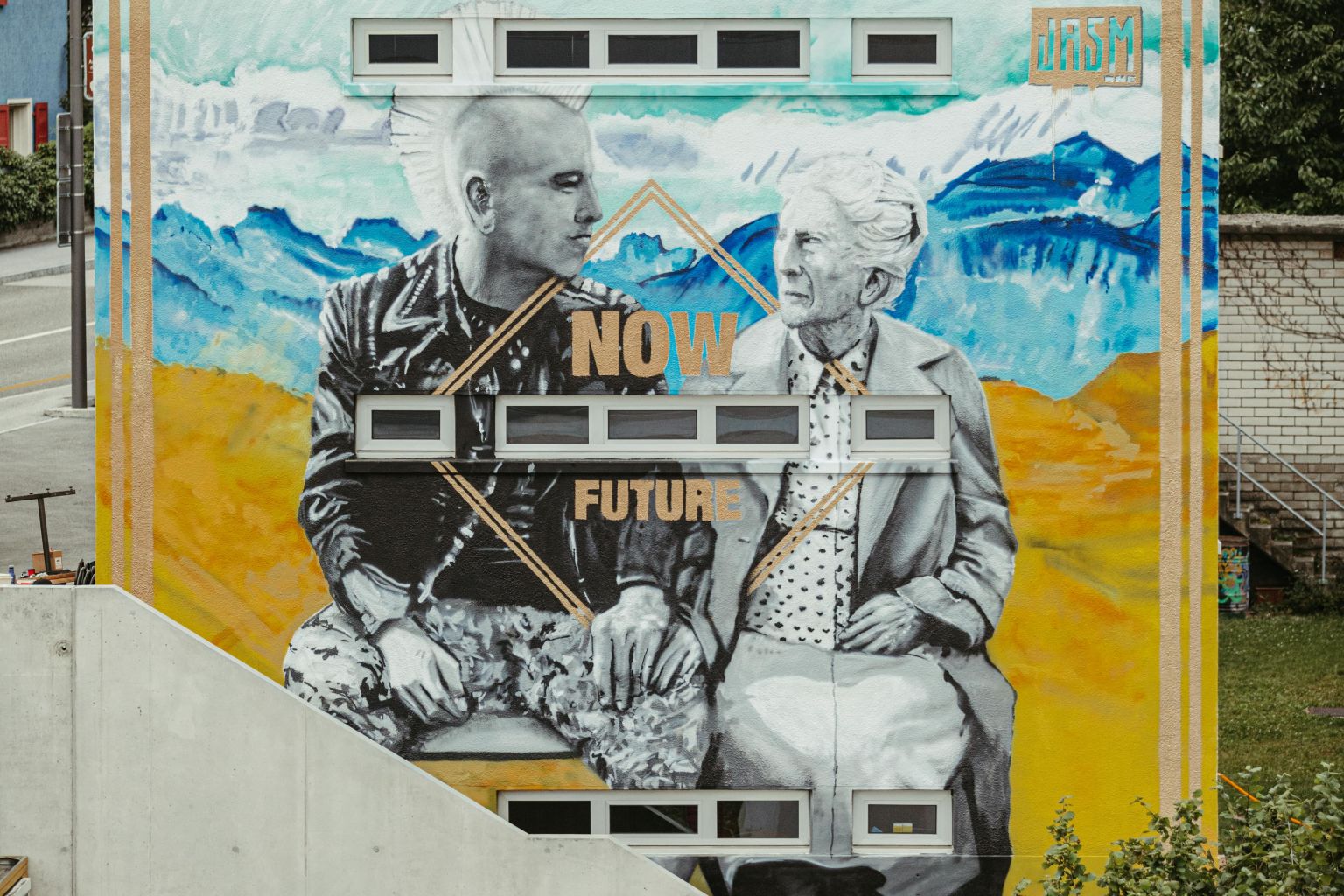
Issam Rezgui grew up in Sion and created his first legal wall painting in 2002, in the underground passageway of a bridge across the Rhône. In 2008, he unveiled a work on the walls of the open-air swimming pool, and the same year obtained permission to create paintings on 13 walls around the city. He then founded a network of graffiti artists, “Collectif 21”, and invited the 50-odd artists to Valais to help spray the 800-odd square metres of wall placed at his disposal. “When you spray legally, it changes everything. The tools and technique are the same, but the approach is totally different. I do research into the place and its history, and set much higher aesthetic standards.”
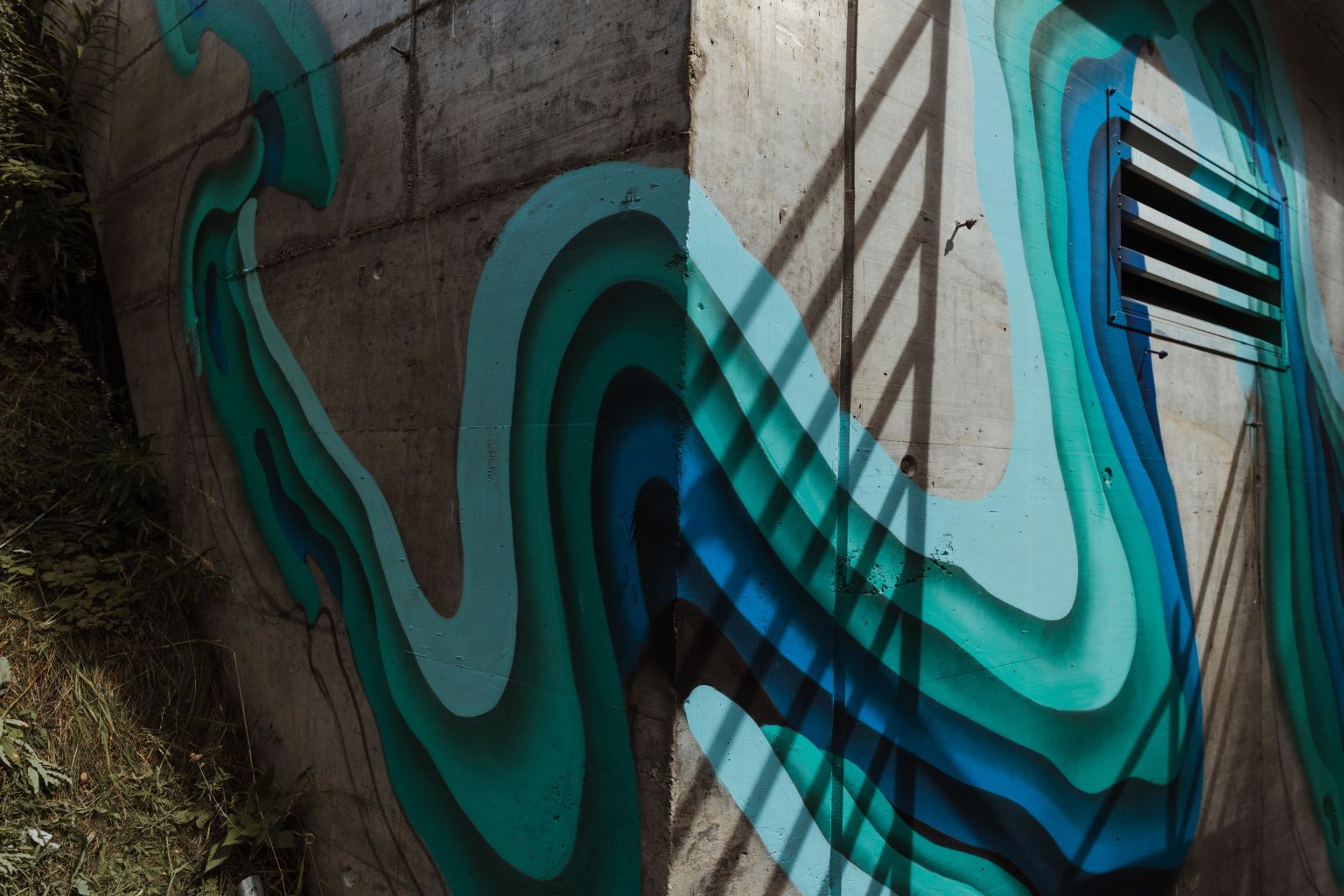
The works of this open-air museum do not come about by chance. The artists are supervised by Issam Rezgui, the overall curator, and selected by a jury of three Swiss and international experts. The choice of location, subject and artist follows a clearly defined procedure. The first stage involves research into the municipality to identify a particular characteristic. The choice of wall must be authorised and the style of image selected from three set options: a figurative work in black and white, an abstract graphic image or a colour illustration. The selected artist is invited to stay in Valais to absorb the atmosphere and the spirit of the place. The artist’s individual creative world then gives birth to a reinterpretation of local cultural heritage. Issam Rezgui takes the example of Martigny to illustrate how he searches for clues to understand the unique characteristics of a place. How, he wondered, can graffiti art coexist with the town’s showcase cultural institution, the Fondation Pierre Gianadda? His research took him to the Médiathèque in Martigny, which houses the visual archives of Valais, and he soon found the answer he was looking for. Martigny’s street art is to be figurative, in black and white or in two colours, and will depict people and their relationship with water – thereby creating a bridge with the pictorial records of the past at the Médiathèque.
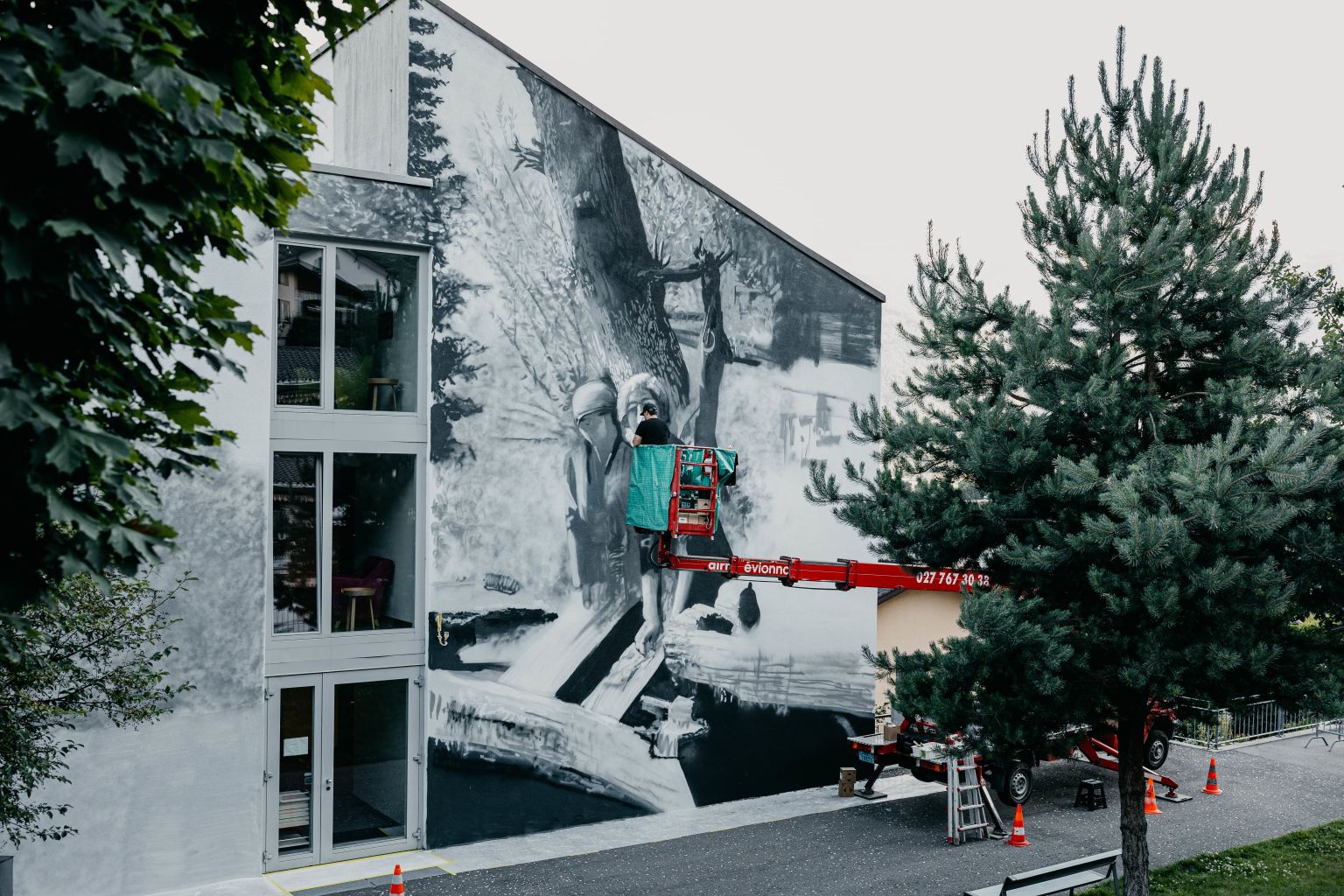
Might Valais one day have graffiti covering the wall of a dam? Issam Rezgui is not convinced: “A permanent work would not be appropriate, but you could imagine something more subtle. Something that showcases the wall and its natural setting.” The historical centre of the village of Ernen, a conservation area, also presented the graffiti artists with a challenge, but they managed to come up with a solution – in the form of a video projection.
Text: Manuela Lavanchy
Published: Juli 2021
Jules-Henri Gabioud: “Valais is heaven for trail running.”
Next story
